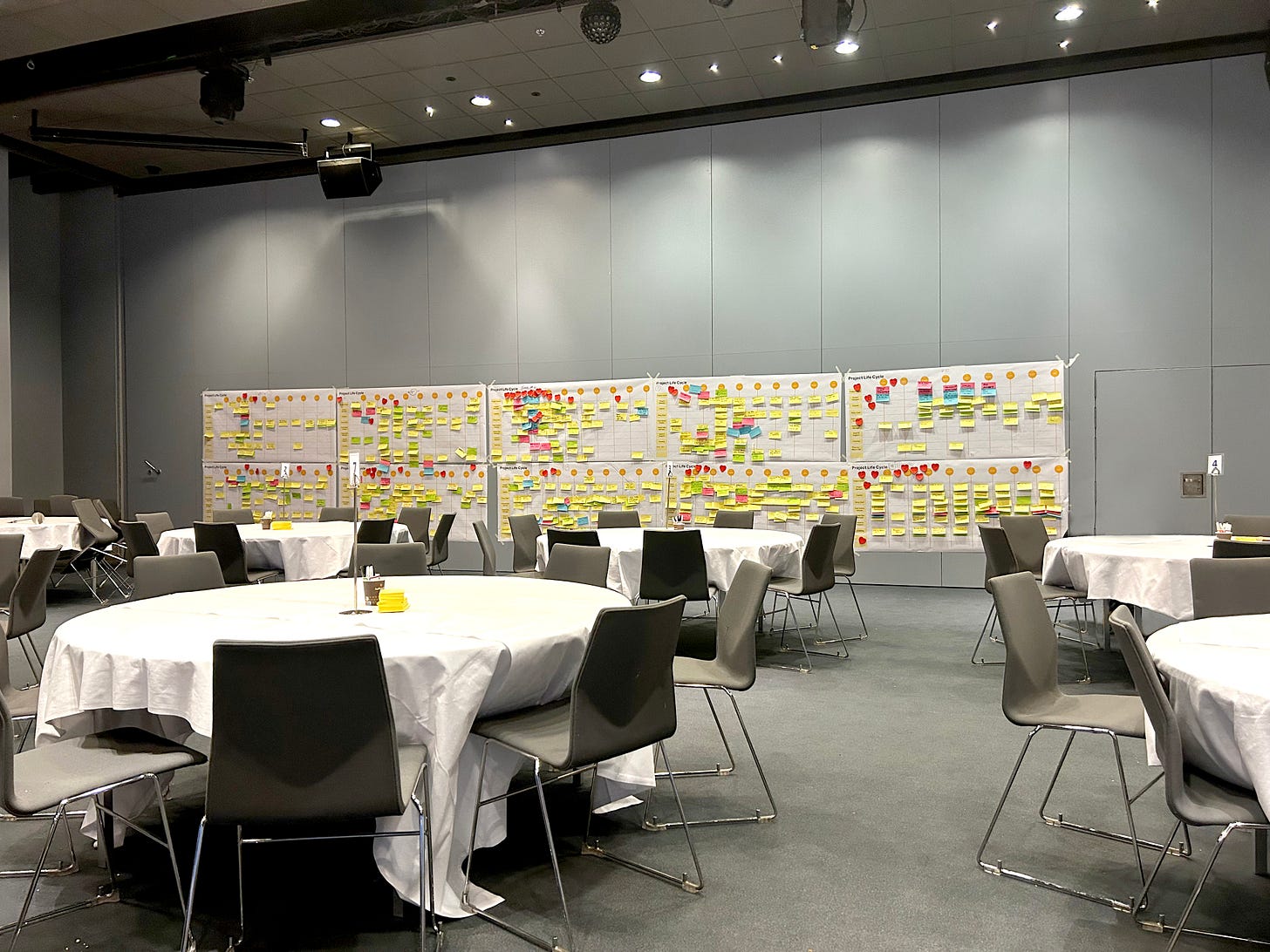From Seminar to Workshop: How to Transform Mindsets for Collaborative Success
Turn 128 highly skilled professionals from passive listeners to active collaborators. Pre-empt resistance, warm up participants, and create a participatory mindset that fosters connection & engagement
Imagine this: you’ve got 128 managers and specialists gathered in a single room. They’ve come from different locations — onshore and offshore — to navigate the complexities of a recent merger. The stakes are high, and the goal is ambitious: to build connections, share understanding, and chart a collaborative path forward. The challenge? Overcoming the entrenched “schoolroom seminar” mindset where attendees expect to sit passively through hours of presentations.
In a recent workshop I facilitated, our intention was clear: reduce the reliance on PowerPoint and focus instead on dynamic, participatory activities. The key to success was carefully designed pre-empts and warm-ups to shift mindsets and set the stage for a productive day.
Goals of the Event
For this one-day workshop, we aimed to:
Build bridges and connections among participants.
Foster understanding of individual roles and how they intersect.
Encourage discussions that uncover similarities, differences, and opportunities for collaboration.
Create a foundation for effective teamwork moving forward.
Achieving these goals required transforming the room’s energy from passive observation to active participation.
Intention of the Day’s Activities
Our activities were designed to achieve the following:
Morning: Encourage participants to work within their immediate teams. Each table created a "hero" character representing the ultimate version of their role, fostering camaraderie and understanding of their group’s unique strengths.
Afternoon: Mix participants across diverse groups to explore our cross-functional processes. This helped them understand how their roles affect and are influenced by others.
The Problem Mindset
Many attendees arrived with unspoken questions and hesitations:
Who is this facilitator, and why should I listen?
Why are we expected to do more than sit and listen?
What if I’m not comfortable participating or drawing?
How will this benefit me or my team?
Without addressing these concerns, resistance and disengagement could easily derail the workshop.
Shifting the Mindset: Clear Steps
Prepare the Room Layout: Set the tone for collaboration by arranging the room intentionally. We used round tables seating eight participants each, with strict seating plans to ensure a mix of complementary skill sets. This purposeful setup fostered the right dynamics for interaction and teamwork.
Start with a Personal Story: I began with a story about a recent facilitation retreat where I had an “aha” moment as a participant. Sharing this vulnerable and relatable experience established my credibility, set behavioral expectations, and emphasized the importance of mutual respect and inclusivity. This created an easy segue into…
Set Behavioral Agreements: I outlined simple agreements. This created a safe and collaborative atmosphere.
Be inclusive
Trust the process
Respect the time-boxing
Respect the silent working times
Engage with Energizing Warm-Ups: We started with a high-energy activity: rock-paper-scissors with all 128 participants. This got people moving, breaking the ice, and generating a sense of fun and camaraderie.
Incorporate a Drawing Warm-Up: Participants drew silly images (an elephant, a boat, and a neighbor’s portrait) using their non-dominant hand. The exercise lightened the mood, made imperfection acceptable, and prepared them for creative thinking. Next, they drew what it means to do their job well, sparking reflection and table discussions.
Build Momentum into Key Activities: With the warm-ups complete, participants were ready to dive into the morning “hero” exercise. This progression ensured they felt confident and prepared to engage fully.
The Groundwork Delivered
By addressing resistance upfront and creating a structured progression of activities, the group transformed. Participants moved from skepticism to active collaboration. They built relationships, shared insights, and engaged in meaningful discussions that laid the groundwork for ongoing teamwork and integration.
Testimonials
"The round table format certainly changed the dynamic. I don’t think we will ever go back to the classroom style." Event Responsible
“Key parts were knowledge sharing, fostering opportunities to get to know each other, ensuring a good mix of workshops, and, most importantly, gaining a clear understanding of the different business models. But the best was, we got to know each other.” Participant
Top Tip
Plan your opening carefully. Use a personal story to establish credibility, set behavioral expectations, and address unspoken concerns. Follow with an icebreaker that gets participants moving and laughing together. By the time you start your main activities, the room will be energized and ready to collaborate.


